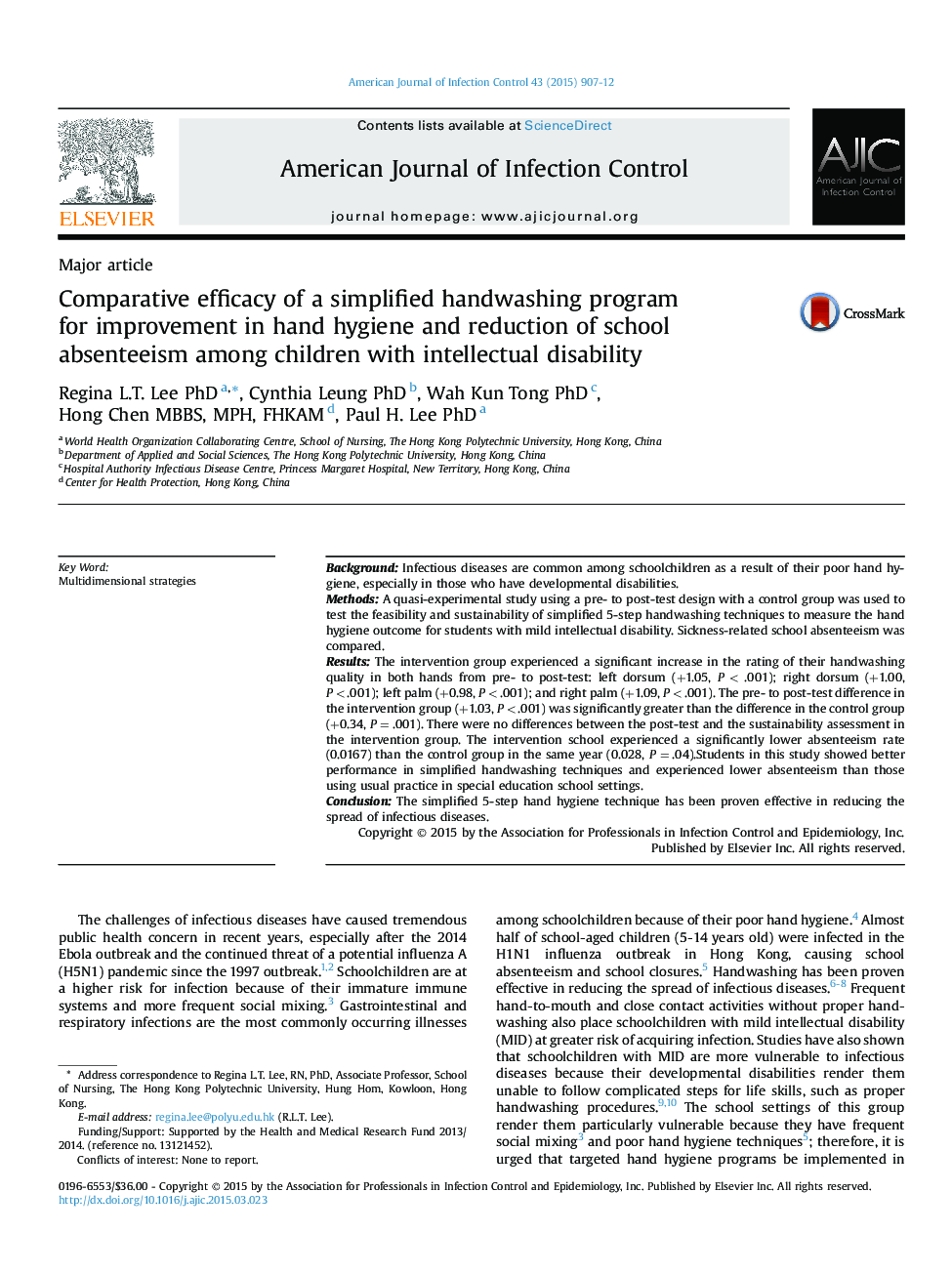| کد مقاله | کد نشریه | سال انتشار | مقاله انگلیسی | نسخه تمام متن |
|---|---|---|---|---|
| 2636712 | 1563468 | 2015 | 6 صفحه PDF | دانلود رایگان |
• Evidence-based simplified handwashing program to prevent infectious diseases.
• Social learning factors contribute to the improvement of handwashing quality.
• Multimedia promotes handwashing techniques for children with special needs.
• Efficacy of primary health care is shown through a simplified handwashing program.
• Fluorescent stain rating test is used to assess handwashing quality.
BackgroundInfectious diseases are common among schoolchildren as a result of their poor hand hygiene, especially in those who have developmental disabilities.MethodsA quasi-experimental study using a pre- to post-test design with a control group was used to test the feasibility and sustainability of simplified 5-step handwashing techniques to measure the hand hygiene outcome for students with mild intellectual disability. Sickness-related school absenteeism was compared.ResultsThe intervention group experienced a significant increase in the rating of their handwashing quality in both hands from pre- to post-test: left dorsum (+1.05, P < .001); right dorsum (+1.00, P < .001); left palm (+0.98, P < .001); and right palm (+1.09, P < .001). The pre- to post-test difference in the intervention group (+1.03, P < .001) was significantly greater than the difference in the control group (+0.34, P = .001). There were no differences between the post-test and the sustainability assessment in the intervention group. The intervention school experienced a significantly lower absenteeism rate (0.0167) than the control group in the same year (0.028, P = .04).Students in this study showed better performance in simplified handwashing techniques and experienced lower absenteeism than those using usual practice in special education school settings.ConclusionThe simplified 5-step hand hygiene technique has been proven effective in reducing the spread of infectious diseases.
Journal: American Journal of Infection Control - Volume 43, Issue 9, 1 September 2015, Pages 907–912
